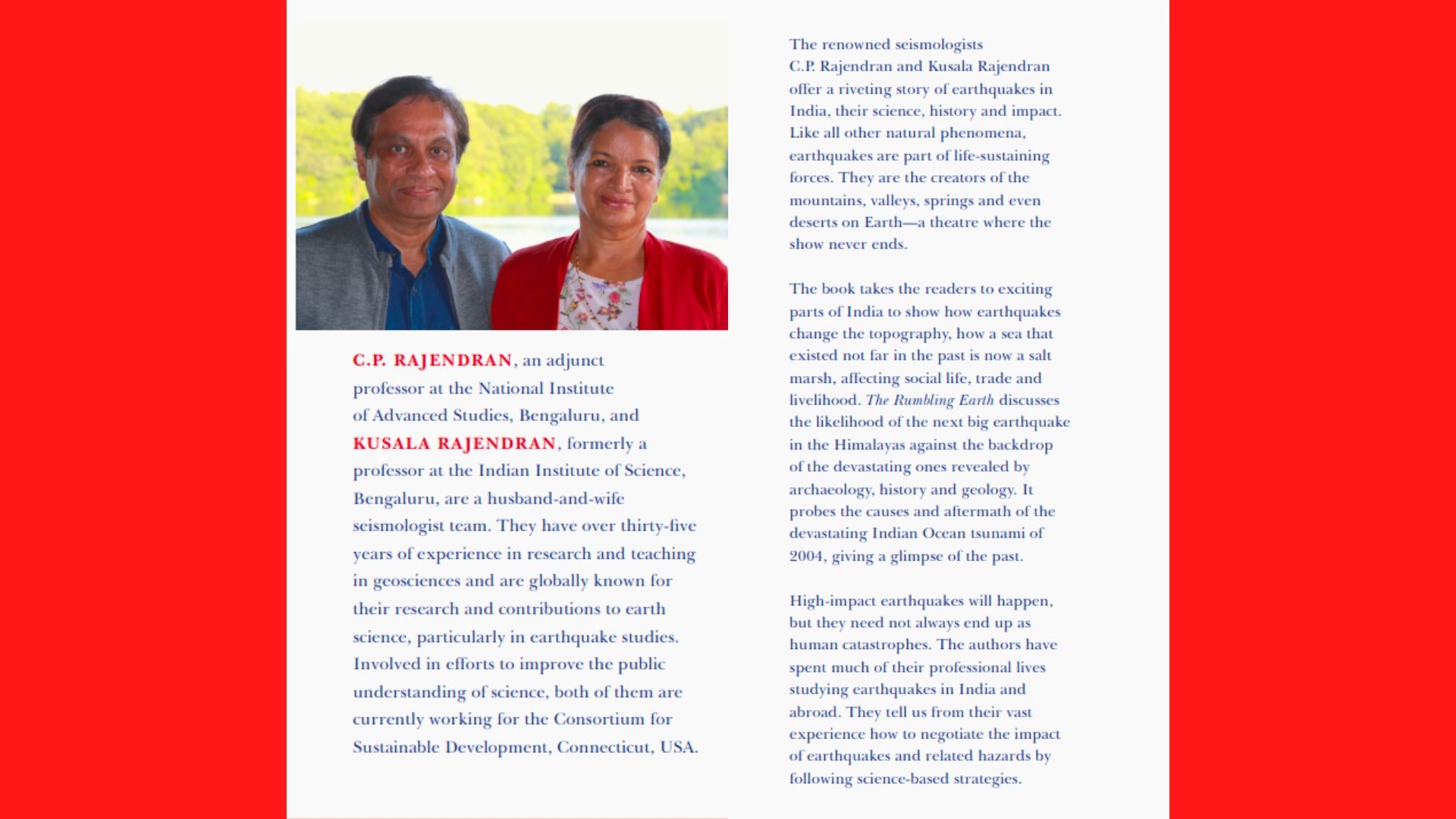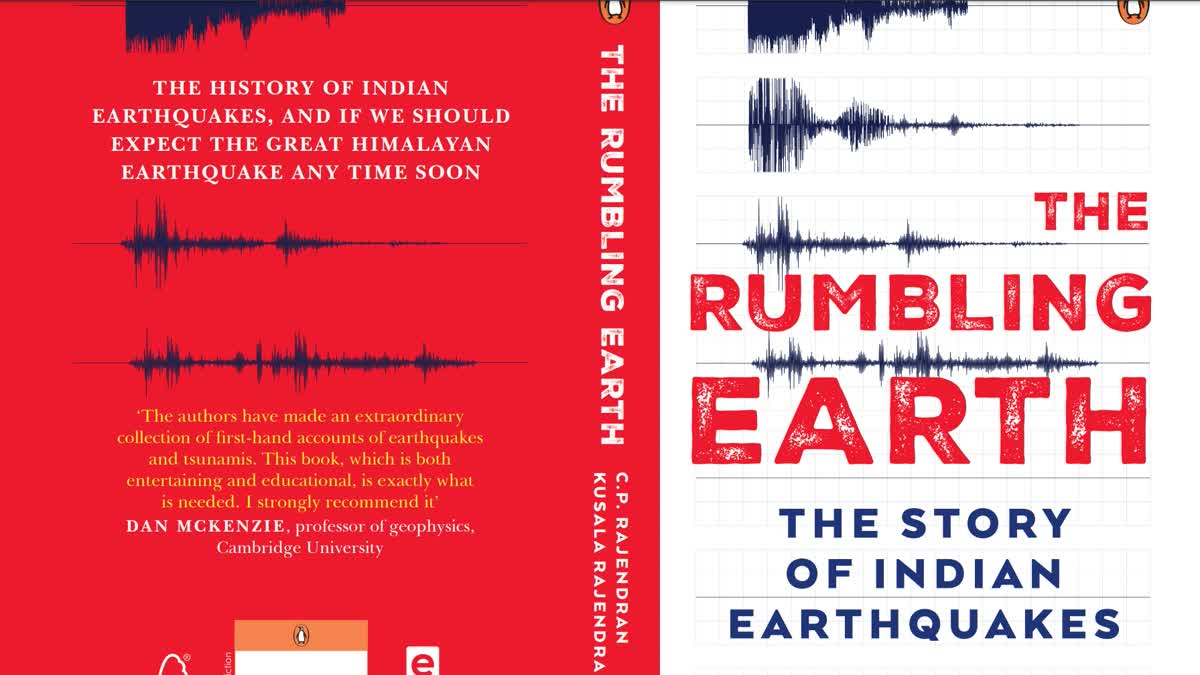Understanding why and how earthquakes occur has been our vocation. Our marriage in the early 80s wasn’t just about the union of two people, with academic specialisations in Earth sciences, it was also an unwritten consent to work together in our research endeavours.
Being husband and wife helped us mutually reinforce our passion for conducting scientific research. It wasn’t until we reached the University of South Carolina, in the late 80s for doctoral and postdoctoral research that we both embraced earthquake studies as our shared vocation. It started with the mysterious earthquake in 1886, which devastated the historic town of Charleston, not far from our university in Columbia, South Carolina.
Like the fictional archaeologist and a famous film character, Indiana Jones, while searching for evidence of the earthquake in the swamps of South Carolina coastal plains, we were transforming ourselves into professional earthquake hunters.
Reaching back to India after our five-year stint in the USA, we continued to unravel the enigmatic mysteries associated with earthquakes hidden within the depths. ‘The Rumbling Earth - the Story of Indian Earthquakes’, now published by Penguin Random House, is about our ventures into uncharted territories to comprehend earthquakes - why and where they occur - a reflection also on our Indian experiences during the past three decades as seismologists relying on our abilities to decipher cryptic clues left by the earthquakes and paint them on a broader global canvas.

What does the book carry?
The exploration of history and archaeological discoveries on earthquakes will spark a renewed interest in their interdisciplinary applicability in the study of earthquakes. The book is for anyone curious to learn about why the Earth rumbles suddenly and what we can do to lessen the impact of such shaking and save lives. It is also for the public who may want to know if an earthquake would shake them up and for those who report earthquakes in the media and struggle to understand the complex scientific terminologies. The book will spark interest in students who want to know how our mother planet works.
The book starts with basic concepts about earthquakes and devotes a whole chapter enriched with explanatory notes to prepare the reader. Early on, the book prepares the readers with the advent of plate tectonics – the foundational theory in Earth science – providing a historical perspective, followed by another chapter on the development of modern seismology.
India, a moving tectonic plate colliding with the Eurasian plate, is a unique natural laboratory to study earthquakes, and it is not surprising that many fundamental ideas emerged out of the studies of Indian earthquakes in the early part of the 20th century.
Earthquakes bring surprises all the time
Earthquakes sometimes occur in the most unexpected regions - like the one that hit Killari (Latur) in central India, in the wee hours of the 30th of September 1993. A region hitherto considered seismically inactive and placed in zone I of the seismic zonation map, it was indeed an out-of-the-blue event, as explained in this book. It takes the reader through the tectonic settings and earthquake histories of two regions - Killari and Jabalpur - both located in the continental hinterlands. What about earthquakes generated by dams? There is a brief discussion on the 1967 earthquake near the Koyna Dam in the state of Maharashtra and why reservoirs trigger earthquakes.

Some 19th-century earthquakes in the Indian subcontinent are among the best-studied and historically documented. The Kutch earthquake of 1819 in the state of Gujarat that created the iconic ‘Mound of God' made it to one of the earliest Geology textbooks - The Principles of Geology by Charles Lyell, the father of modern geology. The earthquake created a 90 km long scrap that stood about 4 meters above the salt plains of the Rann of Kutch and dammed a tributary of the Indus River - a spectacular demonstration of how an earthquake changes the landscape.
Earthquakes bring surprises all the time. The same Kutch region was rattled by another earthquake in 2001, this time closer to the city of Bhuj. Two earthquakes rarely hit a continental interior region in about 180 years and the twin events allowed us to explore past earthquakes.
The book narrates our expeditions to the country’s western border where the 1819 earthquake had originated and brings the reader back to 2001, and to a similar-sized earthquake at Bhuj.
Chapters on these examples showcase how geological methods are useful for exploring the history of earthquakes beyond recent and historical times. Two of the great Indian earthquakes occurred in North-East India - on the Shillong Plateau, in 1897 and Upper Assam in 1950. Discussion on the 1897 earthquake highlights its significance as the largest instrumentally recorded, which opened new vistas in observational seismology. The memoir by R.D. Oldham of the Geological Survey of India is regarded as a classic field report of an earthquake. Oldham picked up clear evidence for various ground waves - P, S, and surface waves – produced by earthquakes, a first-time observation that forms the backbone of modern seismology. The Shillong earthquake is perhaps one of the few 19th-century events for which vivid descriptions, some in the form of letters, exist.
The book has captured many interesting aspects of this earthquake. The earthquake that hit Upper Assam on India’s Independence Day of 1950 is regarded as the largest continental earthquake. The landslides that followed in the Himalayan hill slopes and dammed the streams to form lakes that are still preserved, as vividly described in this book.
Are the Himalayas ripe for a tremor?
Many believe that the Himalayas are a smoking gun and that a large earthquake is overdue. This is not a speculation, but an idea arrived at by studying the stresses due to the tectonic forces. A great earthquake rocked the Bihar-Nepal in 1934 and it devastated the Gangetic Plains. Another damaging earthquake shook the Kangra Valley in 1905.
Seismologists believe that the part of the Himalayas that remains intact between these two regions has not generated any earthquakes for at least 500 years if not more. They define it as a ‘gap’, or a part of the plate boundary where an earthquake is missing. It is important to understand the concept of seismic gap from the point of hazard mitigation strategies.
Damage to heritage structures like temples by earthquake shaking provides indicators to reconstruct the history of earthquakes, as narrated in this book. Earthquake-related minor damage to Qutb Minar, since the 13th century, presented in this book, provides the best example of how such structures can serve as 'earthquake recorders '.
The day after Christmas of 2004 is an unforgettable day for the people of Indian Ocean rim countries. That was the day when a great earthquake in Indonesia triggered a trans-oceanic tsunami. It was also a new experience for earth scientists in India. Did it have a predecessor?
Research along the coastal regions of the affected countries using geological and historical evidence proved that the 2004 event was not the first. It had a nearly 1,000-year-old predecessor. There might even be a younger one, 500 years ago, that had lesser transoceanic reach. The 2004 event led to finding some previously unknown tsunami events described in this book.
The book raises the most disturbing question: Are we prepared for the next great earthquake? It also goes through the holy grail of earthquake prediction. The Parkfield experiment (California) may have failed. There is still optimism that Artificial Intelligence (AI) may be able to provide some forewarning leading to better preparedness and disaster reduction. The book reminds the famous maxim: “Buildings kill people, not earthquakes”- underscoring the need for earthquake-resistant designs.
(C.P. Rajendran is Adjunct Professor, National Institute of Advanced Studies, Bengaluru. Kusala Rajendran is former Professor, Indian Institute of Science, Bengaluru)
Read More



